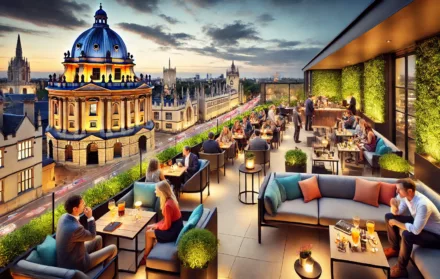
The Best Leicester Attractions for Architecture Lovers
Embarking on a journey through Leicester, a city steeped in rich history and vibrant culture, offers an unparalleled experience for architecture lovers. This city, nestled in the heart of England, serves as a canvas displaying centuries of architectural evolution, from ancient Roman ruins to cutting-edge contemporary designs. Leicester’s landscape is dotted with buildings that tell tales of its past, its growth, and its resilience through times of change. It is a place where every corner holds a story, every street a different era, and every building a unique style. For those fascinated by the amalgamation of history and modernity, Leicester presents an enticing exploration into the world of architecture, making it a prime destination for Leicester attractions for architecture lovers.
The allure of Leicester’s architectural heritage is not merely in the grandeur of its historic buildings but also in the intricate details and the stories behind them. It’s a city where the past and the present coalesce seamlessly, offering a spectrum of attractions for every type of architecture enthusiast. Whether you are drawn to the ancient charm of historic sites, the creative expression found within the arts scene, the educational richness of museums, the leisurely appeal of gardens, or the contemporary allure of modern-day attractions, Leicester has something to captivate your senses and pique your interest.
For those intrigued by Leicester’s historical narrative, the city’s historic sites provide a gateway into its storied past. These landmarks are not just remnants of time; they are markers of the city’s resilience and growth, each with a unique architectural style and significance. They invite visitors to step back in time and immerse themselves in Leicester’s rich history, offering a glimpse into the lives of those who walked the streets centuries ago.
The city’s arts scene further enriches the architectural landscape, blending creativity with culture in a vivid display of artistic expression. Leicester’s galleries and art spaces are a testament to the city’s thriving contemporary arts scene, where architecture serves as both a backdrop and a canvas for creativity. It’s a place where the built environment and artistic endeavors merge, creating spaces that inspire and captivate.
Museums in Leicester offer another facet to the architectural exploration, housing collections that span various periods and styles. These institutions are architectural marvels in their own right, designed to both preserve and showcase the city’s heritage. Through their exhibits, they tell the story of Leicester’s evolution, highlighting the architectural advancements that have shaped the city over the centuries.
For those seeking a leisurely exploration of Leicester’s architectural beauty, the city’s gardens and parks offer a serene escape. These green spaces are not only a testament to landscape architecture but also provide a peaceful retreat from the urban landscape. They showcase the importance of integrating nature with the built environment, creating harmonious spaces for relaxation and contemplation.
Moreover, attractions in Leicester cater to those with a penchant for modern architecture, offering a glimpse into the city’s future through innovative designs and sustainable building practices. These sites reflect Leicester’s commitment to progress and sustainability, highlighting the city’s role in pushing the boundaries of contemporary architecture.
For art lovers, Leicester unfolds as a city where art and architecture intertwine, creating a vibrant tapestry of visual and structural beauty. The attractions tailored for art enthusiasts are spaces where the architectural design enhances the art within, offering unique experiences that blend visual art with architectural ingenuity.
In crafting this journey through Leicester’s architectural wonders, the intention is not just to showcase the buildings and spaces but to illuminate the stories they tell. It’s about understanding the role of architecture in shaping the city’s identity, reflecting its past, and envisioning its future. As we delve into the best Leicester attractions for architecture lovers, we embark on a narrative that explores the essence of the city through its most remarkable architectural achievements. This exploration is not just about appreciating the aesthetics of buildings but about connecting with the history, culture, and vision that they embody. Leicester, with its diverse architectural landscape, offers a rich tapestry of experiences that beckon architecture lovers to discover, learn, and be inspired.
Leicester Cathedral
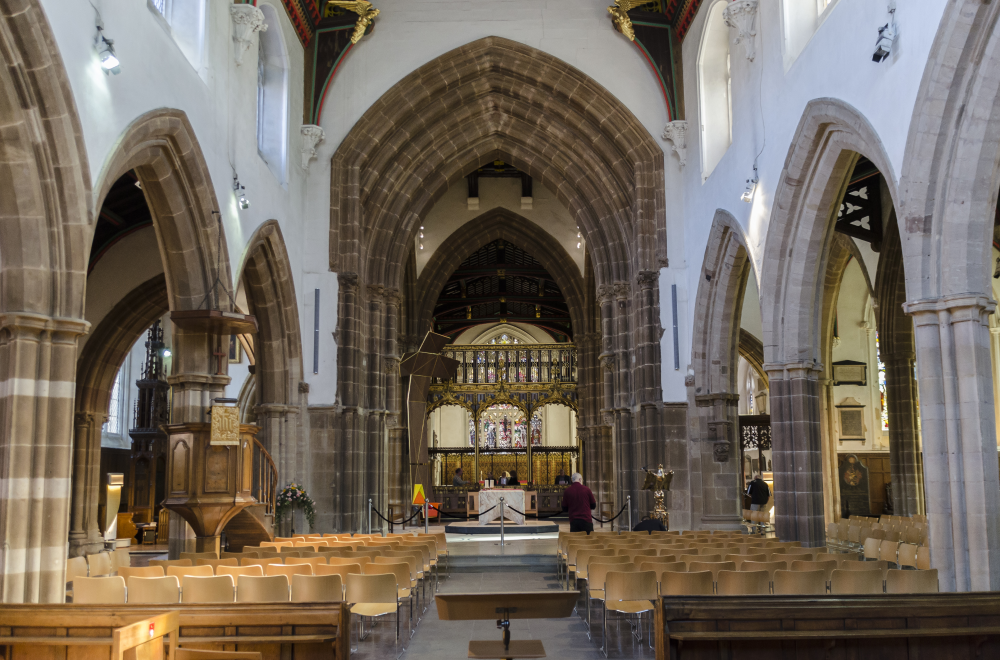
Leicester Cathedral, situated in Leicester, is an attraction that architecture enthusiasts should not overlook. The cathedral’s Gothic style architecture showcases splendid arches, intricate carvings, and exquisite stained glass windows, demonstrating remarkable craftsmanship and meticulous attention to detail.
With a history dating back to the 11th century, the cathedral has undergone renovations and expansions, evolving into a significant cultural landmark. Upon arrival, visitors can explore beautiful chapels, elaborate tombs, and take part in religious services. Guided tours provide valuable insights into the cathedral’s history and significance.
Leicester Cathedral also serves as the final resting place of King Richard III, further enhancing its historical importance. For individuals with a passion for architecture and those intrigued by local history and culture, a visit to Leicester Cathedral ensures a captivating experience.
Prior to your visit, it is recommended to check the opening hours, special events, or services in order to make the most of your time at this remarkable architectural wonder.
King Richard III Visitor Centre
The King Richard III Visitor Centre in Leicester provides an engaging and informative experience for history enthusiasts. Visitors can learn about the life and legacy of King Richard III through interactive displays. These displays utilise state-of-the-art technology to bring history to life and enable visitors to fully immerse themselves in this decisive era of English history.
The centre houses the archaeological remains of the King, which were discovered buried beneath a car park in Leicester. This remarkable find generated considerable excitement among historians and sparked a renewed interest in the story of Richard III.
The King Richard III Visitor Centre offers guided tours, which provide further insights into the life and times of this iconic figure. Knowledgeable guides share fascinating information about Richard III, his impact on England, and the architectural history of the centre.
Are you passionate about history? Do you enjoy exploring historical landmarks? A visit to the King Richard III Visitor Centre is a must. Immerse yourself in the captivating world of King Richard III and gain a deeper understanding of this fascinating period in Leicester’s history.
St. Mary’s Guildhall
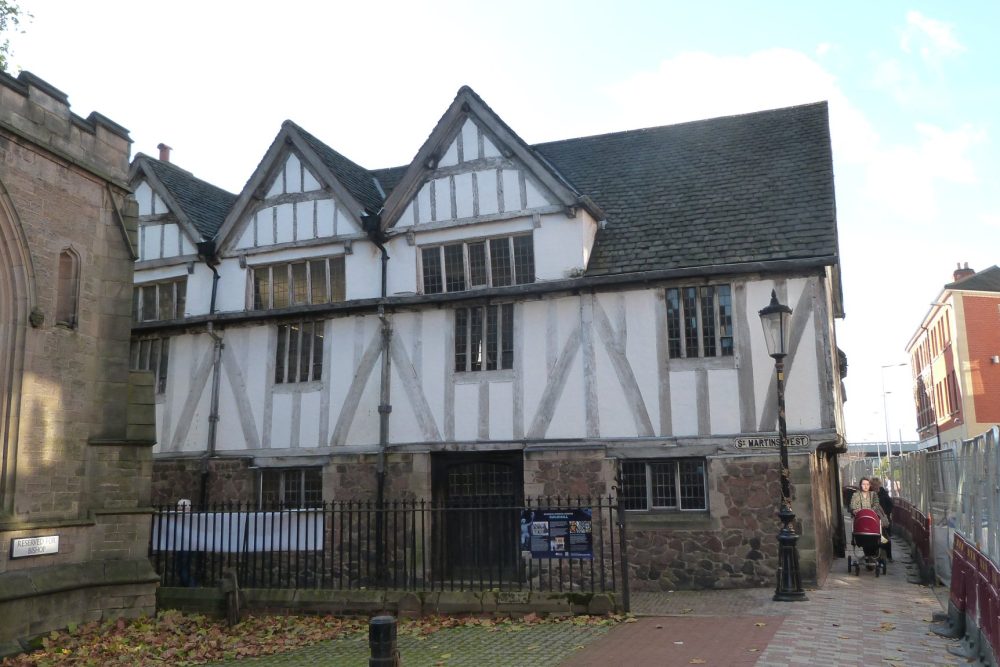
St. Mary’s Guildhall in Leicester, UK, is a historical edifice of great importance as one of the best-preserved medieval halls in the country. Originally used as a meeting place for the Guild of Corpus Christi in the 14th century, it currently serves as a popular tourist attraction and venue for various events.
The architecture of the Guildhall is a perfect representation of medieval craftsmanship. The exceptional timber-framed structure, adorned with intricate carvings and decorative motifs, captivates architecture enthusiasts. Inside, visitors can admire stunning stained glass windows, oak paneling, and a magnificent Great Hall.
At St. Mary’s Guildhall, visitors have the opportunity to explore its rich history through informative exhibits and displays. Guided tours provide deeper insights into the building’s past and the events that have unfolded within its walls. The Guildhall also hosts a variety of cultural events, including exhibitions, concerts, and weddings, creating a vibrant and lively atmosphere.
When visiting St. Mary’s Guildhall, take the time to appreciate the remarkable craftsmanship of the architecture, delve into its fascinating history, and acknowledge its contribution to the cultural heritage of Leicester.
Did you know? St. Mary’s Guildhall is believed to have been visited by notable figures such as King Richard III and Queen Elizabeth I during their reigns.
Guildhall Lane
Guildhall Lane is a street of historical importance in Leicester, which is well-known for its splendid architectural designs and rich cultural heritage. This street is home to several notable buildings that demonstrate the historical significance and architectural brilliance of the city.
One exceptional attraction on Guildhall Lane is the Guildhall itself, an ancient edifice that goes back to the 14th century. Throughout the years, the Guildhall has served various purposes, including being a courthouse and a gathering place for the city council. At present, it stands as a symbol of Leicester’s past and offers visitors the opportunity to marvel at its magnificence.
Another remarkable landmark on Guildhall Lane is the Magazine Gateway, an exquisite timber-framed structure that was once a part of the medieval town walls. It serves as a testament to Leicester’s strategic importance and defensive history.
While taking a stroll along Guildhall Lane, visitors will encounter charming historic houses and buildings that represent a wide range of architectural styles, from Tudor to Georgian. These well-preserved structures beautifully showcase the architectural diversity of the city.
Exploring Guildhall Lane provides architecture enthusiasts with an immersive experience in Leicester’s remarkable history and allows them to admire its impressive structures. Whether you are a history enthusiast or simply appreciate remarkable architecture, Guildhall Lane is a destination that should not be missed when visiting Leicester.
New Walk Museum and Art Gallery
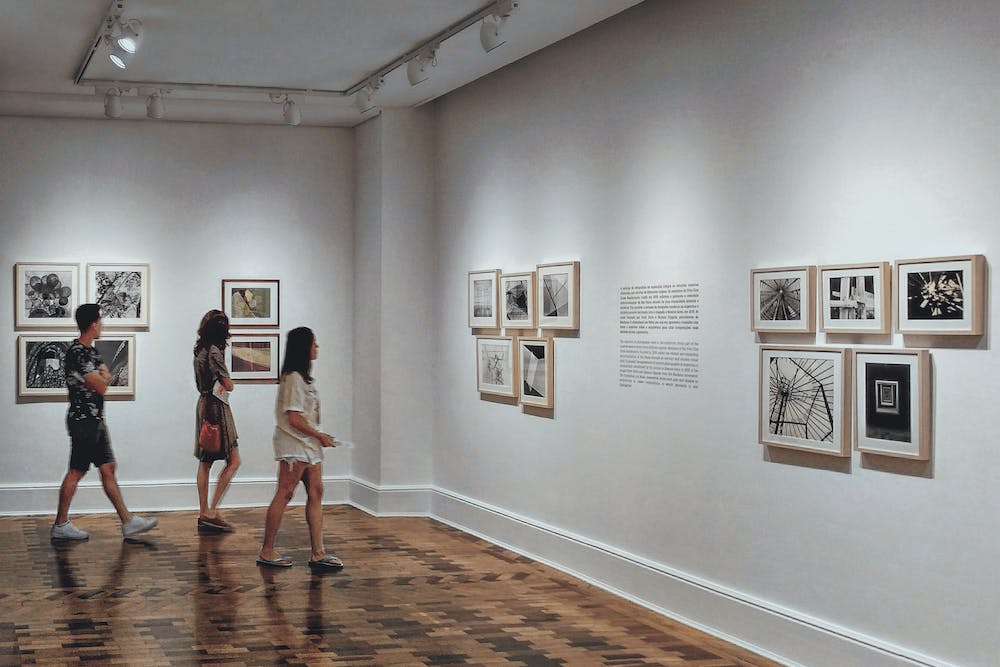
The New Walk Museum and Art Gallery in Leicester is a must-visit for enthusiasts of architecture. Some highlights include:
- Architectural Beauty: The museum is situated in a stunning Georgian edifice with arched windows, grand entrances, and ornate interiors. The symmetrical design and elegant proportions impress admirers of architecture.
- Rich Established: in 1849, the museum showcases Leicester’s industrial and artistic accomplishments. Visitors can explore the history of the building and its significance in the local community.
- Diverse Collections: The museum offers a wide array of exhibits, ranging from ancient Egyptian artifacts to contemporary artworks. There is something for everyone to enjoy and appreciate.
- Interactive Displays: The museum features interactive displays that allow visitors to try on historical costumes and engage in educational activities. It brings history and art to life in an immersive manner.
Fact: The New Walk Museum and Art Gallery draws over 200,000 visitors each year, making it one of Leicester’s most popular cultural attractions.
Belgrave Hall
Belgrave Hall in Leicester, UK is a historic Georgian manor house. It appeals to those who appreciate architecture and have an interest in history. The construction of this building took place in the early 18th century and has been preserved to showcase its grandeur.
An exceptional feature of Belgrave Hall is its elegant red brick facade, which highlights the Georgian architectural style. The symmetrical design, large sliding windows, and grand entrance porch captivate visitors with their timeless beauty.
Internally, visitors can explore well-preserved rooms, offering a glimpse into the past. The period furniture, delicate plasterwork, and intricate detailing transport you back in time. The extensive gardens surrounding the hall provide a peaceful retreat for leisurely walks and the admiration of the landscape.
For architecture enthusiasts, Belgrave Hall showcases exemplary Georgian architecture and the rich history of Leicester. It allows for the appreciation of the craftsmanship and the meticulous attention to detail that contributed to the creation of such a magnificent structure.
Before visiting, please check the opening hours and any applicable restrictions at Belgrave Hall. Immerse yourself in the elegant atmosphere of this historic manor and appreciate its architectural beauty.
Other notable attractions in Leicester for architecture enthusiasts include Leicester Cathedral, Jewry Wall Museum, and New Walk Museum and Art Gallery. These locations present various architectural styles and offer diverse experiences for exploring Leicester’s architectural heritage.
Leicester Castle
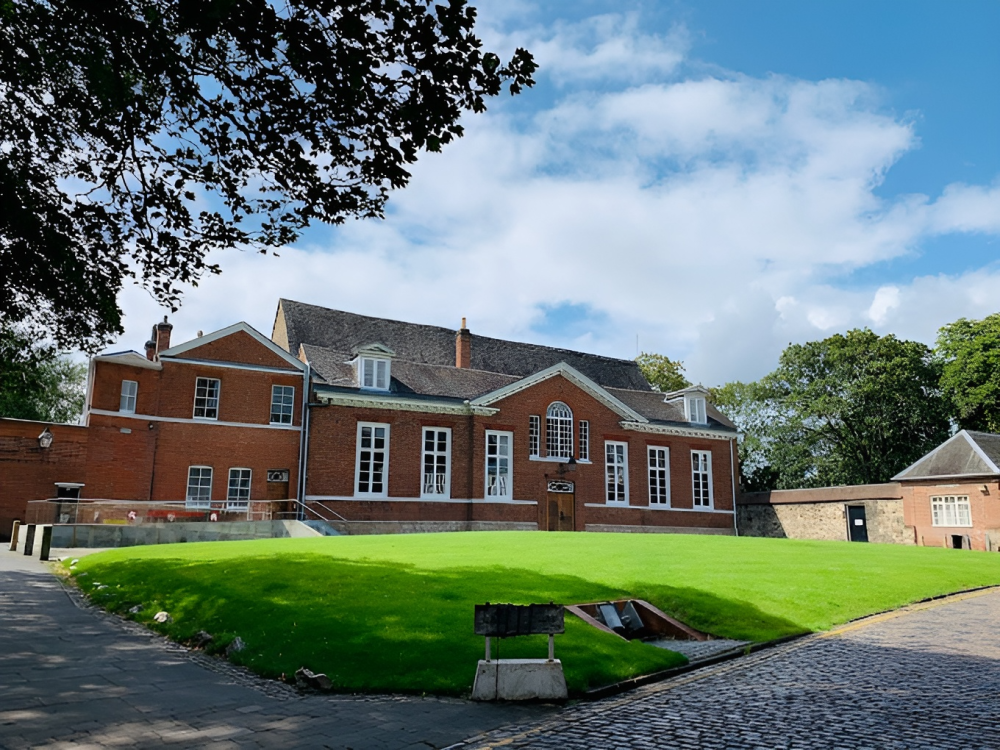
Leicester Castle is a historical landmark situated in the centre of Leicester. It presents a magnificent combination of architectural styles, encompassing both Norman and Tudor influences.
The castle dates back to the 11th century and holds noteworthy historical importance. It served as a defensive fortress initially and later transformed into a royal residence. Even King Richard III resided here prior to the Battle of Bosworth.
To gain a deeper understanding of its history and architecture, visitors can partake in guided tours of the castle. Leicester Castle also hosts exhibitions that display artefacts, documents, and artworks, offering insights into its history and the lives of its inhabitants.
The surrounding area is lively, featuring charming streets, shops, and cafes. Leicester Castle possesses immense historical significance, symbolising power and authority. Presently, it stands as a remarkable architectural gem, inviting visitors to explore its rich past and admire its magnificence.
Jewry Wall Museum
The Jewry Wall Museum in Leicester is a crucial attraction for enthusiasts of architecture. This esteemed museum showcases the remains of a Roman bathhouse, offering a glimpse into the ancient history of the city.
Situated on St. Nicholas Circle, the museum is conveniently accessible for visitors. The remnants of the bathhouse, which date back to the 2nd century, exemplify Leicester’s rich historical background. The architectural elements feature intricately designed walls and arches that highlight the Romans’ exceptional skill and craftsmanship.
Within the museum, you will find valuable artefacts and exhibitions that provide insight into Roman life and culture. There are pottery pieces, jewellery, tools, and coins waiting to be discovered. Knowledgeable staff members are on hand to answer questions and provide additional information.
A useful tip for visitors to the Jewry Wall Museum is to allocate sufficient time for exploring the exhibits. The museum offers a wealth of information, so it is worthwhile dedicating ample time to fully appreciate everything on display. Don’t forget to bring your camera to capture the breathtaking architecture and artefacts.
Abbey Pumping Station
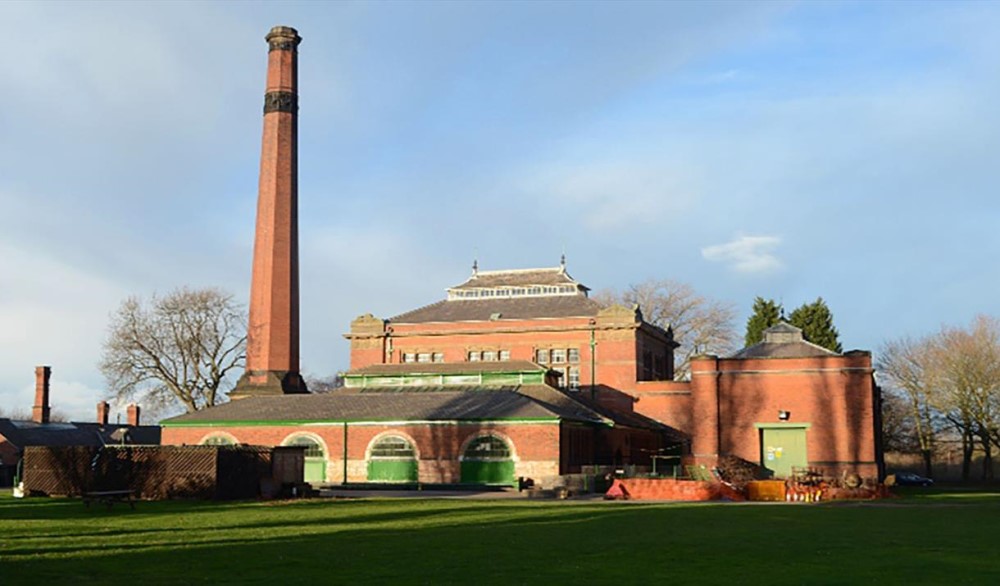
The Abbey Pumping Station in Leicester, UK is a museum that exhibits the industrial history of the city. It was constructed in 1891 for the purpose of pumping sewage and was in operation until 1964. Presently, it provides a glimpse into the Victorian era and the wonders of engineering.
In the Abbey Pumping Station, one can witness the action of steam-powered engines. These engines were essential for the functioning of the station and display the ingenuity of the engineers during that time.
In addition to the engines, the station houses vintage vehicles such as steam-powered fire engines and buses. These vehicles offer insight into the transportation systems of the past.
A visit to the Abbey Pumping Station is an excellent way to learn about Leicester’s history and industrial development. It provides a unique opportunity to observe how infrastructure was built and maintained during the Victorian era. Whether you have an interest in architecture or a passion for history, the Abbey Pumping Station is definitely worth visiting.
Leicester Clock Tower
The Leicester Clock Tower stands as a testament to Leicester’s rich architectural heritage and is an iconic symbol of the city. Located in the heart of Leicester, this historical landmark reaches a height of 78 feet and was built in 1868. The Clock Tower showcases a blend of Victorian and Gothic styles, enhancing its charm and adding to Leicester’s skyline.
Visitors to Leicester can admire the intricate details and craftsmanship of the Clock Tower up close. The facade of the tower features impressive carvings and ornamental motifs, showcasing the skills of the craftsmen who constructed it.
The Leicester Clock Tower serves as a reminder of the city’s history and the importance of preserving its architectural heritage. It proudly stands as a meeting point for both locals and tourists, symbolizing Leicester’s proud past.
While exploring Leicester, don’t forget to take a moment to admire the Leicester Clock Tower. Its imposing presence and architectural beauty are sure to leave a lasting impression on you.
The Curve Theatre
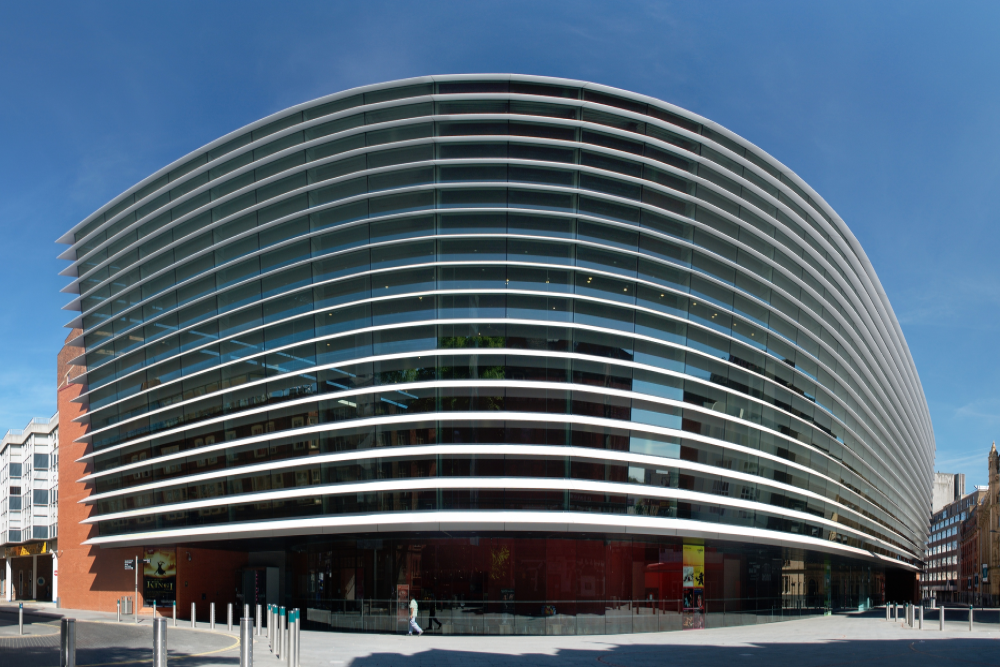
The Curve Theatre is a popular attraction in Leicester. It has a unique architectural design and exceptional theatrical performances.
This iconic venue, celebrated for its strikingly modern aesthetic, boasts a seamless curved glass façade that effortlessly melds sleek contemporary design with functional elegance. As a centerpiece of Leicester’s cultural landscape, The Curve captivates both the eye and the imagination with its innovative design.
Beyond its architectural allure, The Curve Theatre is a dynamic platform for an eclectic array of performances. From riveting plays and mesmerizing musicals to captivating dance shows and stirring concerts, the theatre’s programming is as diverse as it is engaging, drawing audiences into a world of artistic expression and narrative exploration.
With a seating capacity that impressively accommodates over a thousand guests, The Curve Theatre creates an atmosphere that is at once intimate and electrifying. Each performance is amplified by the theatre’s cutting-edge facilities, including advanced lighting and sound systems, which converge to elevate the sensory experience of each attendee.
The Curve places a high value on comfort and accessibility, offering spacious seating arrangements and inclusive options for guests with disabilities. This commitment to accessibility underscores the theatre’s dedication to welcoming all members of the community, ensuring that the magic of the performing arts is available to everyone.
One of the theatre’s most commendable attributes is its fervent support of local talent. By spotlighting productions by local artists and providing a stage for emerging performers, The Curve plays a pivotal role in nurturing the artistic landscape of Leicester. This initiative not only enriches the theatre’s repertoire but also fosters a strong sense of community and local pride.
Critical acclaim and accolades have frequently been bestowed upon The Curve Theatre, with numerous productions receiving prestigious awards and nominations. Such recognition is a testament to the theatre’s excellence in curating high-quality performances that resonate with audiences and critics alike.
Beyond entertainment, The Curve Theatre is dedicated to the enrichment of the community through a range of educational programmes and workshops. These initiatives aim to ignite creative passions and cultivate an appreciation for the arts, shaping the cultural fabric of Leicester.
How Did Leicester Become a Hub of Architectural Heritage?
Leicester has become a hub of architectural heritage due to its historical events, cultural influences, and urban development. The city’s strategic location has led to the construction of significant buildings and structures throughout the centuries, adding to its historical significance.
Leicester has been shaped by various cultural periods, resulting in a diverse range of architectural styles across the city. To preserve its architectural heritage, Leicester has undertaken renovation projects, conservation efforts, and the preservation of historic buildings, demonstrating its commitment to urban development.
Leicester Abbey, Leicester Guildhall, and Leicester Cathedral are iconic structures that showcase the city’s architectural heritage and cultural identity. Leicester’s thriving architectural industry and educational institutions have fostered innovation and creativity, solidifying its reputation as a hub of architectural heritage.
What Is the History of Leicester’s Architectural Development?
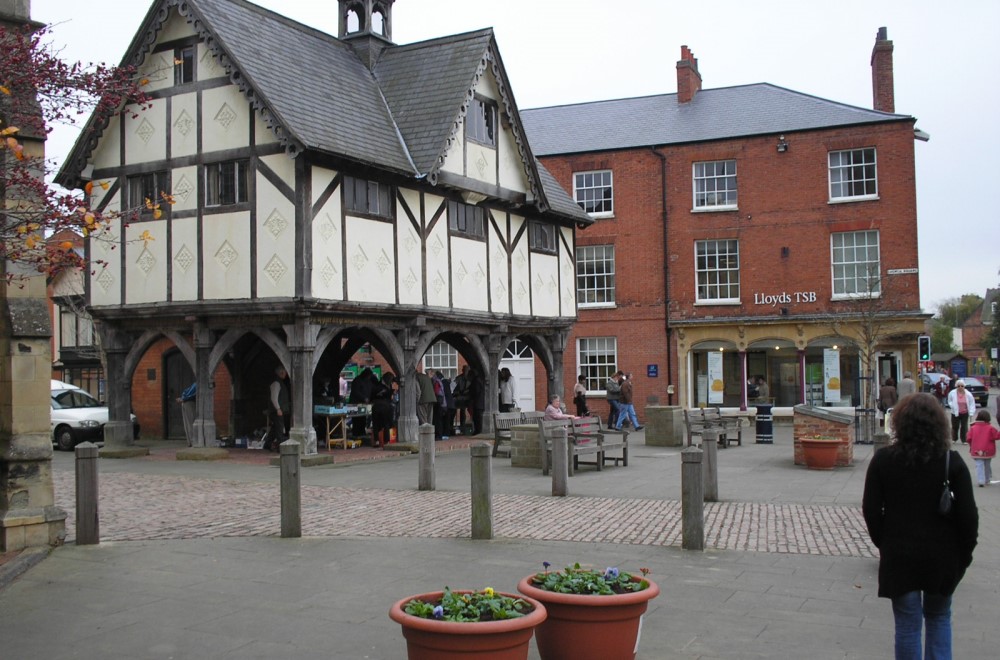
Leicester’s architectural development is a testament to the rich history of the city. Dating all the way back to Roman times when it was known as Ratae Corieltauvorum, Leicester has a fascinating story to tell.
Throughout the medieval period, Leicester experienced the construction of notable structures such as Leicester Castle and St. Mary’s Guildhall. These buildings served as centers of power and remain important historical landmarks today.
The architectural landscape of Leicester continued to evolve during the Georgian and Victorian eras. This period saw the introduction of neoclassical and Gothic Revival styles, which can be observed in magnificent buildings like Leicester Cathedral and the Jewry Wall Museum.
What sets Leicester apart is the influence of its diverse population on its architecture. Victorian terraces and modernist buildings bring together different cultures and communities, creating a vibrant and dynamic cityscape.
Today, Leicester’s historic buildings have been repurposed and transformed into cultural landmarks. These landmarks attract visitors from all corners of the globe and play a crucial role in contributing to the local economy.
To truly appreciate Leicester’s architectural heritage and delve into its rich history, consider taking a guided tour. It’s a pro-tip worth considering!
What Are the Key Architectural Styles Found in Leicester?
Leicester is renowned for its rich history and cultural identity, which is beautifully reflected in its diverse architectural styles. If you’re wondering, “What are the key architectural styles found in Leicester?” here’s a breakdown:
1. Gothic Architecture: The iconic Leicester Cathedral stands as a prime example of Gothic architecture, featuring intricate and pointed arches. The cathedral’s spire stands tall as a symbol of the city.
2. Tudor Style: Located in the heart of Leicester, St. Mary’s Guildhall proudly exhibits the Tudor style with its half-timbered frontage and exquisite carvings. This historical building offers an enticing glimpse into the city’s past.
3. Georgian Influence: Along Guildhall Lane, you’ll find a showcase of Georgian architecture known for its symmetrical designs and graceful proportions. The meticulously preserved buildings on this lane provide valuable insights into Leicester’s Georgian era.
4. Victorian Grandeur: The New Walk Museum and Art Gallery is a true Victorian treasure, boasting elaborate details and grandeur. Within its walls, you’ll find captivating displays of art, history, and natural history exhibits.
5. Edwardian Elegance: Step into the Edwardian era by visiting Belgrave Hall, a magnificent mansion renowned for its red-brick structure and refined gardens. It offers a captivating glimpse into Edwardian architecture and lifestyle.
These distinct architectural styles not only embrace Leicester’s cultural identity but also serve as a gateway to its past. As you explore the city and immerse yourself in its heritage, you’ll appreciate the fusion of these styles, which contribute to Leicester’s unique charm. It’s no wonder that architecture enthusiasts from all over the world are drawn to this magnificent city.
How Does Leicester’s Architecture Reflect Its Cultural Identity?

Leicester’s architecture is a true reflection of its cultural identity. The city’s rich history, diverse population, and vibrant cultural scene have shaped its architectural landscape over the years.
One of the ways Leicester’s architecture showcases its cultural identity is through the preservation of historical buildings. Leicester Cathedral, for instance, is a stunning example of Gothic architecture that represents the city’s Christian heritage. Additionally, St. Mary’s Guildhall serves as a testament to the city’s medieval past.
Multiculturalism also plays a significant role in Leicester’s architectural identity. Belgrave Hall, designed in the Victorian style, symbolizes the city’s Indian heritage and the influence of the Indian community.
Furthermore, Leicester’s modern architecture embraces contemporary designs and innovative structures, further reflecting its cultural identity. The Curve Theatre, with its striking modern design, demonstrates the city’s dedication to the arts and theater.
The use of unique materials and styles further intertwines Leicester’s architecture with its cultural identity. Buildings like Guildhall Lane, constructed with local stone and red brick, establish a distinct visual identity for Leicester.
Throughout the centuries, Leicester’s architecture has evolved, mirroring its historical significance. From its Roman settlement origins to its development as a medieval market town, the city has experienced architectural transformations. Leicester’s architecture not only encompasses iconic structures but also adapts to societal changes, serving as a testament to its cultural identity. Leicester remains a hub of architectural heritage, showcasing ancient buildings like Leicester Cathedral alongside modern developments like The Curve Theatre. By continuing to reflect its cultural scene, embrace multiculturalism, and preserve its historical roots while embracing modernity, Leicester’s architecture testifies to the city’s past, growth, and ongoing evolution.




